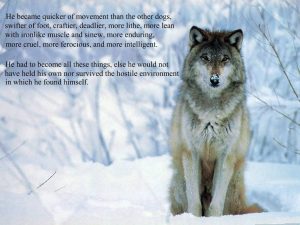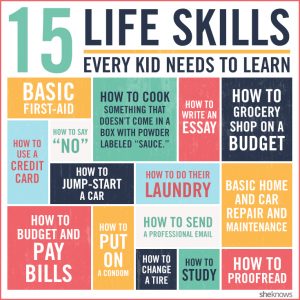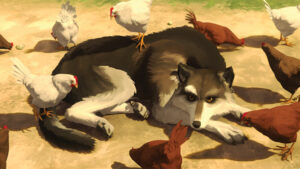Podcast: Play in new window | Download
 Let’s build a high vibration person. let’s build a skill, let’s build some skills
Let’s build a high vibration person. let’s build a skill, let’s build some skills
I am starting a new series that also shows a new direction I am taking my teaching/coaching practice.
The new direction is skill-building.
Obviously, if you are like most people, you have no idea what a skill is. You may say some inane things, but you still don’t know. Even if you read the “what color is your parachute” famous book that has been published and every year for 48 years, with over ten million copies sold.
I have taught it. I have lead the workshop. And I can safely tell you that in all those years, there wasn’t one person who learned from me, or from the book what a skill really is, and then develop skills that would take them far on the job market.
Why? Because skill is part of the invisible world.
 It is operational, it is determining like everything in the invisible world, but unless you learn how to work that world, you are out of water, you are not going to live the good life.
It is operational, it is determining like everything in the invisible world, but unless you learn how to work that world, you are out of water, you are not going to live the good life.
Most people, quite predictably, don’t have any skills to write home about. Some have skills, but they think they could work for them only if they could use it in the same exact environment as where they learned them. so they are out of water too.
My desire has been to only work with people who actually want to learn. I think by choosing this new theme, I’ll get much less people to my site, but they will be a lot more ambitious, and easier to teach than the people I have now.
–you can build a tangible skill
here are a few tangible skills: multiplication, drawing a straight line, drawing things in correct perspective, mixing colors in Photoshop, setting up paragraph parameters in Microsoft Word… etc. etc.
–or you can build an intangible skill (something the is not obviously showing up for others. a how phenomenon, a consciousness phenomenon. Because it is an intangible skill, most people won’t see it, or if they see something, the tip of the iceberg, they will mis-identify it.
Warren Buffet’s main “superpower”, main winning skill, is to be able to see what “ball” is in his sweet spot, a ball that will pay off, and pay off in spades.
here is the quote for your convenience:
“I was genetically blessed with a certain wiring that’s very useful in a highly developed market system where there’s lots of chips on the table, and I happen to be good at that game.
Ted Williams wrote a book called The Science of Hitting and in it he had a picture of himself at bat and the strike zone broken into, I think, 77 squares. And he said if he waited for the pitch that was really in his sweet spot he would bat .400 and if he had to swing at something on the lower corner he would probably bat .235.
And in investing I’m in a ‘no called strike’ business which is the best business you can be in. I can look at a thousand different companies and I don’t have to be right on every one of them, or even fifty of them. So I can pick the ball I want to hit. And the trick in investing is just to sit there and watch pitch after pitch go by and wait for the one right in your sweet spot. And if people are yelling, ‘Swing, you bum,’ ignore ’em.
There’s a temptation for people to act far too frequently in stocks simply because they’re so liquid. Over the years you develop a lot of filters. But I do know what I call my ‘circle of competence’ so I stay within that circle and I don’t worry about things that are outside that circle. Defining what your game is – where you’re going to have an edge – is enormously important.”
He calls it wiring, I call it a developed skill.
What does it mean “developing a skill?”
 I will use White Fang, a 75% wolf, 25% dog from Jack London’s novel of the same title, to explain it.
I will use White Fang, a 75% wolf, 25% dog from Jack London’s novel of the same title, to explain it.
In White Fang, the skills were both tangible and intangible. Most dogs/wolves never really honed their skills: they stopped getting better at an early age: they declared themselves done. just like you most likely have done.
 White Fang never declared himself done.
White Fang never declared himself done.
His main concerns were avoiding pain and the path to that was learning the law of the land. and each land has its own laws.
The most useful part of the book is when he is transported to California from the Arctic Circle, where the laws are different. and his method of learning the new laws so he can avoid pain and enjoy life, love, and prosperity.
He practiced, tirelessly, he never stopped asking: is this still the law? And looked at and for the feedback.
Unfamiliar, eh? You stopped doing that decades ago. You may be looking at pleasing others, but not obeying the laws, natural or legal.
You are looking at the “finished” result, and you think these people were born with it. That it was easy for them.
Here is another example, my physical “diagnostic” ability
I don’t remember the early years in this regard… I was as unconscious as any other child. The first inkling I had at around age 10, I fell from a tree, smack dab on the top of a paving block. Its corners broke the skin, and I passed out. but I spent time “diagnosing” what happened inside the broken skin. and decided that I didn’t need a doctor, that the damage was going to heal itself.
Around age 15 I started an apprenticeship with a pantomime group and was trained in the art of controlling every muscle in my body.
Long break: when you hurt, you have a hard time being precise. and I hurt almost without any break for decades. I had some notable experiences: my sinuses got washed out by first breaking bones.. ugh, and getting liquid iron intravenously to cure a stubborn depression. And exploding ovary, and some other unsavory stuff I don’t want to share.
What was “special” about me is that I paid attention, I observed, I watched, I really watched, deeply. Closely.
Decades later I had my brain damage… and I could sense what areas of the brain were dark dead areas. I could sense how the other parts woke up to the need to take over functions that were dead.
And then came the “famous” chiropractic experiments where I could observe, test out which direction and which bone needed to be moved to reduce or eliminate tension. I never stopped. I am still honing my skill. It’s my superpower just like picking the right balls to swing for is Warren Buffet’s.)
I have been working on my awareness and attention (intangible skills)… especially at night.
It seems that the enemy of awareness, in my case, is impatience, and boredom, and the desire to sleep.
I am looking at adding another skill-set, a tangible skill to build: setting up a course that won’t lose its appeal year after year so I can sell it again and again, for years to come.
You can pick whatever skill or skill-set you want, but given the “guided” nature of my programs, you will need to work with me to choose the target skill wisely. What will decide what you’ll do is your destination, your current superpower, and what gives you “juice”.
Skill building is a lot like nutrition:
you can make it expensive and needing a lot of work, research, or you can make it natural, matching your DNA as closely as you can.
One of the most important things I learned from David Allen is this: most people never amount to anything, never accomplish anything because there is something they don’t know.
If you schedule a project that looks like one thing but is made up of several single tasks, you’ll always procrastinate. You’ll always do things in the wrong order. And you’ll never get things done. There is always a first thing, and a second thing… and they build on each other… and so it is with skills.
And one of the secrets of successful people is that they accomplish things. And another one: they have skills that make it easier for them to adjust to the changing world, the changing environment, the changing demands of the markets, the changing technology, etc.
All skills are transferable, all skills are portable…
Like water. Like onions, Like spices… You can make a huge variety of things with them… not just one thing.
Each skill is skill-set that looks monolithical.
I have a distinct feeling that you don’t see what you are doing as having many moving part just like you don’t see, for example, Bill Gates’ time and effort as having distinct and varied elements.
But here is an example: to become a chef in France, Julia Childs had to master chopping onions. Breaking an egg. Watching and accurately judging the temperature of the skillet, the amount of butter, the movements of the skillet on the stove, etc. etc. etc.
I have a student who never learned to cook, even though, at my request, she participated in cooking courses.
 Whereas I once had a young assistant who needed to learn to cook, and I taught the elements of cooking, chopping onions, cleaning and peeling vegetables, chopping vegetables, the ideal temperature for each, the time to put the spices in the dish, the art of keeping a soup clear, etc. etc. etc.
Whereas I once had a young assistant who needed to learn to cook, and I taught the elements of cooking, chopping onions, cleaning and peeling vegetables, chopping vegetables, the ideal temperature for each, the time to put the spices in the dish, the art of keeping a soup clear, etc. etc. etc.
So by the same token, you can work on an aspect of the task, and increase your skill in it.
The secret of these producers, the secret of accomplishers is this ability and willingness to break up seemingly unbreakable tasks into bite size single action items that each you can get good at.
 Also each action item is part of more than just one skill-set
Also each action item is part of more than just one skill-set
Here is an example: one of my students has had a hard time saying no to hardly anything. So his time was never quite his own. he was used by everyone and anyone who wanted to use his time, his brain, his skills.
The missing skill was saying no…
but saying it in a way that doesn’t burn bridges, simply returns you to what is most important to you, and to doing that, instead what others want you to do (including the attempts of your “evil” inclination to do its bidding.)
My favorite skill-building movie is Bob the Butler… it shows you how Bob did become a winner
And it was all through skills he built.


